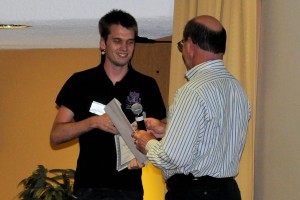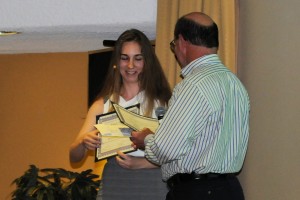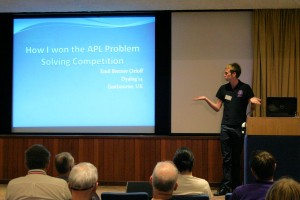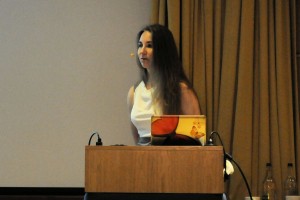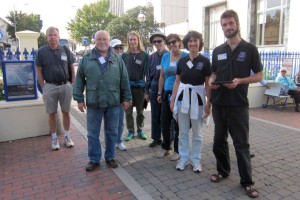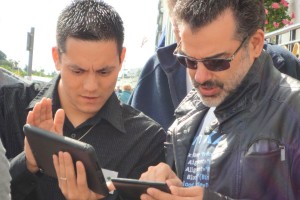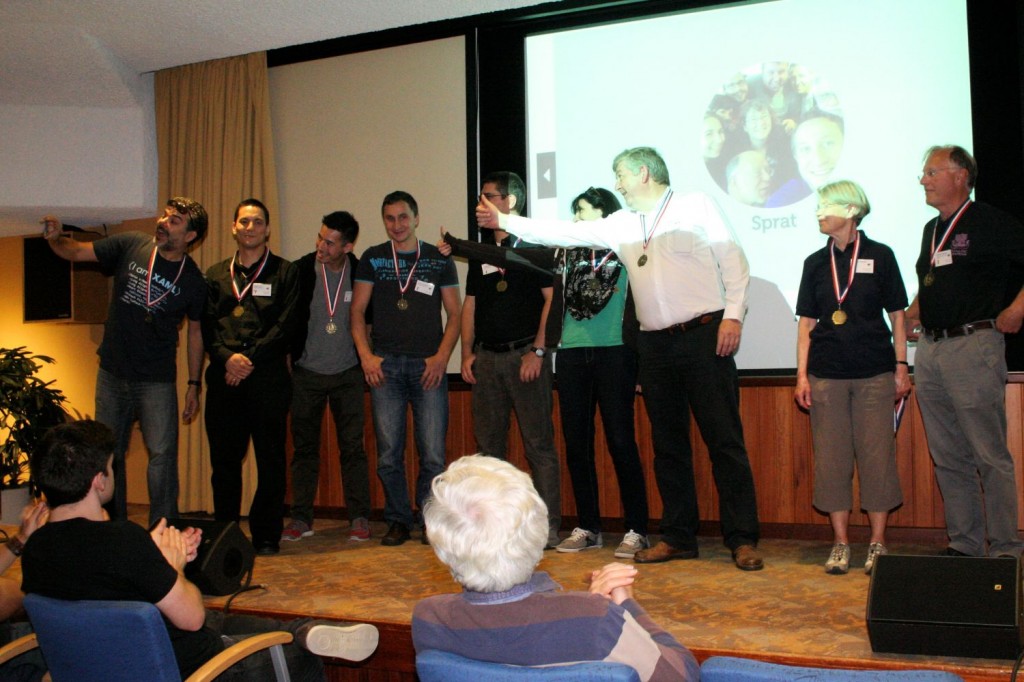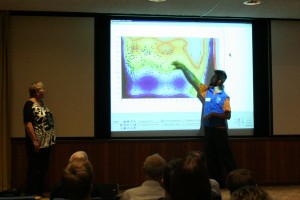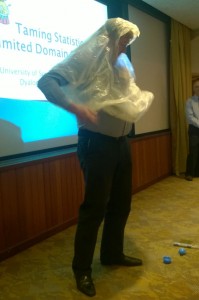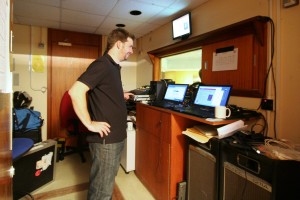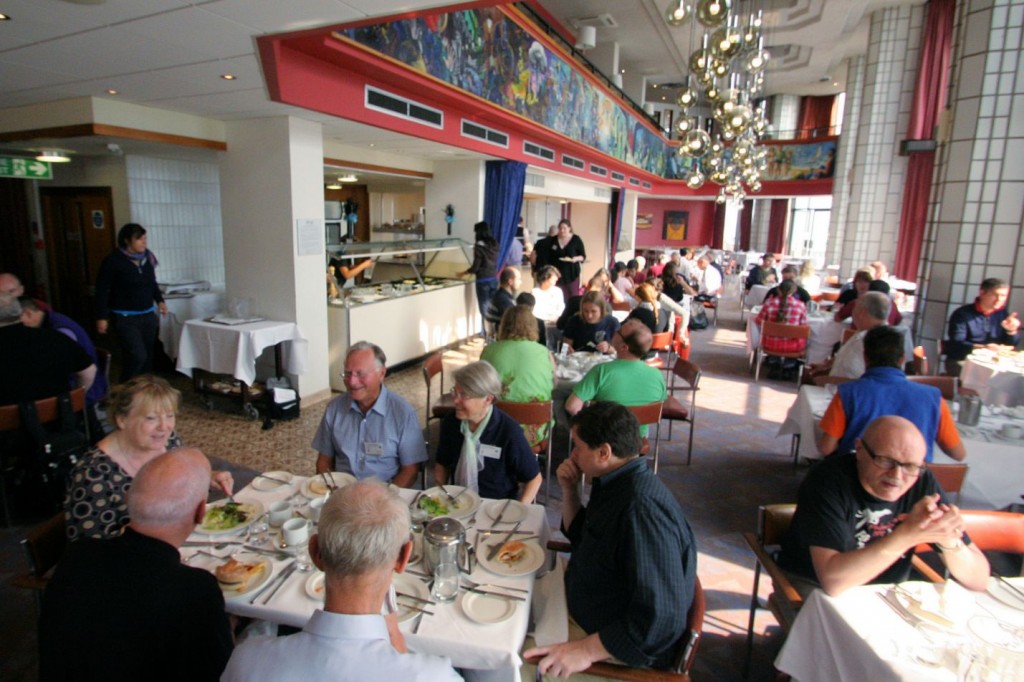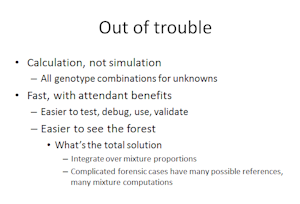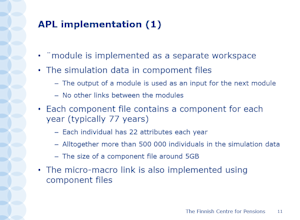This is the last day of Dyalog ’14 so this is the last of six daily postcards from Eastbourne – we hope you have enjoyed getting a flavour of things as they happened. We expect there will be more discussion to come once we’re back and rested!
Last Night’s Banquet
Yesterday culminated in the traditional banquet dinner – the highlight of the social element of the user meeting. This year it was held at The Grand Hotel Eastbourne and consisted of a Champagne reception and formal three course dinner with live music from a string trio.
During the banquet the winners of the scavenger hunt were presented with their prizes – the ducks and other “British” items we saw on Sunday’s postcard! There was also a quiz to identify Dyalog employees from a list of clues. Exquisite food and wonderful company meant an exceptionally late night (early morning!) …
Discussion Point: Read-only Component Files
In his presentation today on component files and the Dyalog File Server (DFS), Richard mentioned a perhaps little-known problem with restricting access permissions on component files for users that nominally only ever read them. Setting read-only permission at the file level – that is, imposed by the operating system – could add a level of security to the file but it is in fact the case that component file reads can occasionally require write access to the file.
For example, suppose User A is reading and writing to a journaled component file and User B is simply ⎕FREADing it. If User A is interrupted whilst updating the file (perhaps the APL session is killed or a network connection is lost) and User B is the next to read it then as part of that read the interpreter will detect the journal and complete the unfinished update – a process which requires write access. If the systems administrator who set up the file permissions for User B had only granted read-only file permission to the file then the ⎕FREAD would fail.
Richard explained that this restriction might be lifted in future and that read operations would be truly read only – even with a journal present – but there is another issue to be aware of too. Access to component files is controlled using file locks. As might be expected, exclusive access is obtained on an exclusive tie and shared access is obtained on a share tie. In addition, writes to a share tied file require exclusive access for the duration of the write so that no other client is able to read it while it is being updated. Exclusive locks are write locks and thus require write permission. Therefore, if there is no write access to the file the interpreter cannot exclusively tie it – it can only share tie it.
Where file access has to be locked down as securely as possible, the DFS is able to resolve the above issues and more besides – client access to all component files is only possible via APL, users are fully authenticated and individual rights are controlled by the access matrix.
And Also …
Some of the other things we saw and heard today:
- Andy showed us how to close trace windows without cutting back the stack
- Ziggi pointed out that a loss rate of one in 700 is acceptable when delivering wine but not when delivering children
- We would like your suggestions and comments about the user meeting programme and structure, and preferred location for next year – please email us at conference@dyalog.com
Eastbourne
Eastbourne has not let us down and even the British weather (which is always unpredictable) defied the odds and rendered the ponchos and umbrellas unnecessary. The View Hotel started life as a conference centre and was purpose built for holding meetings such as ours. We have certainly found it to be an ideal venue and feedback from delegates has been overwhelmingly positive.
The picture of the pier below was carefully framed not to show the fire damaged part! The fire that destroyed part of it back in July was headline news; the pier is closed as a result but should partially reopen next week. Perhaps we will have to return when it is fully restored!
Signing Off
And so Dyalog ’14 has come to an end. It has been the best-attended Dyalog conference anyone can remember and reflects the growing success of Dyalog and its users. Here begins the countdown to Dyalog ’15!





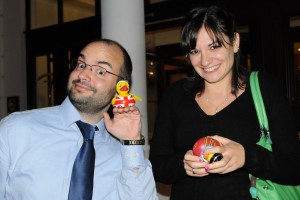

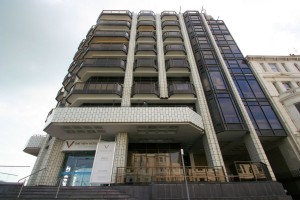


 Follow
Follow